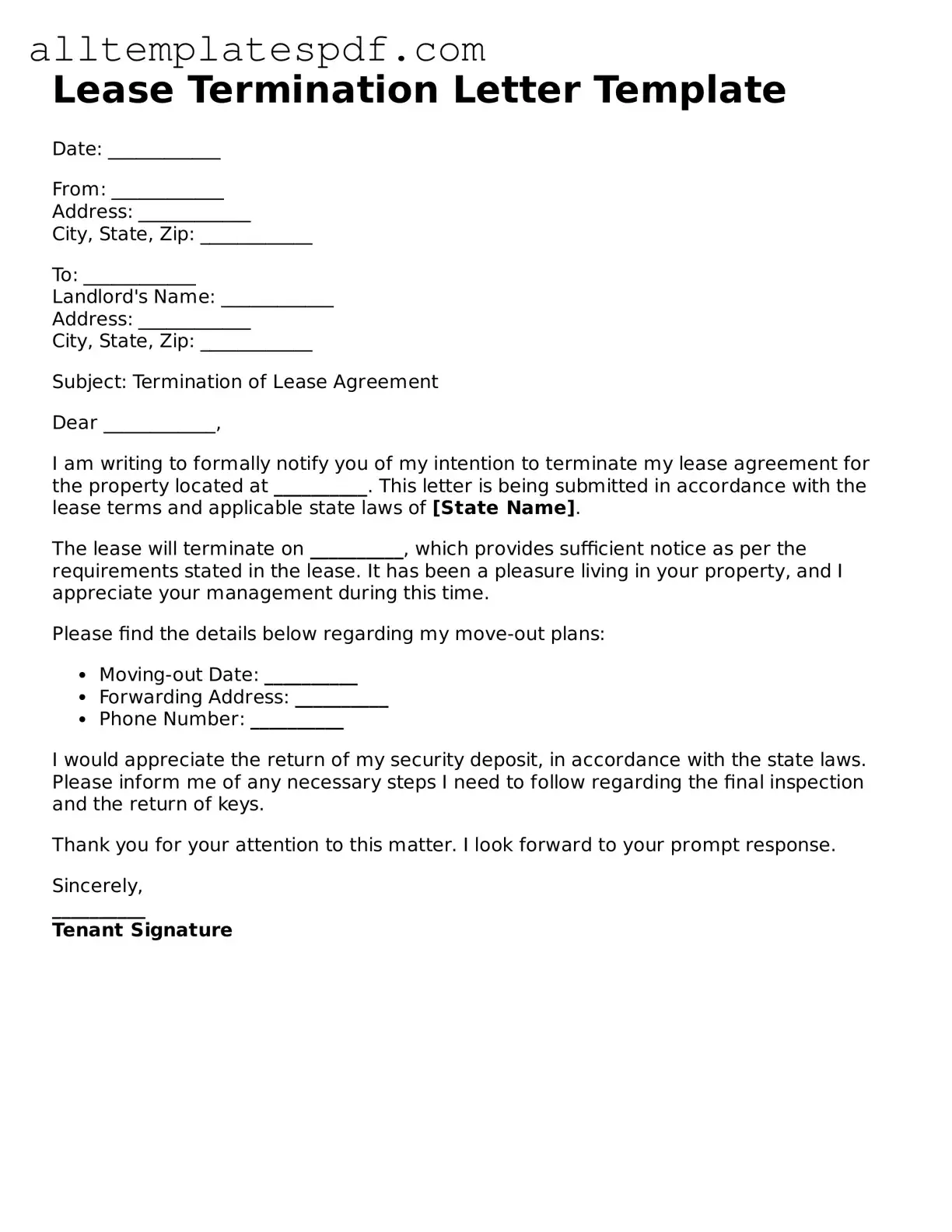When filling out a Lease Termination Letter form, many individuals inadvertently make mistakes that can complicate the process. One common error is failing to include the correct date. The date is crucial, as it establishes when the notice was given. Without this information, landlords may question the validity of the notice or the timeline for moving out.
Another frequent mistake involves not providing sufficient details about the rental property. It is essential to include the full address, including the unit number if applicable. Omitting this information can lead to confusion and may delay the termination process. Clarity is key to ensuring that both parties understand which lease is being terminated.
Many people also overlook the importance of clearly stating their intention to terminate the lease. Simply writing a vague statement can lead to misunderstandings. A direct and clear declaration, such as "I am writing to formally terminate my lease," helps to eliminate any ambiguity and ensures that the landlord understands the tenant's intentions.
Additionally, some individuals forget to check the lease agreement for any specific requirements regarding notice periods. Many leases stipulate how much notice must be given before vacating the property. Ignoring these terms can result in financial penalties or complications in returning the security deposit.
Finally, a common oversight is neglecting to sign and date the letter. A signature is necessary to validate the document and confirm the tenant's identity. Without a signature, the letter may be considered incomplete, leading to potential disputes. Taking the time to review the letter before submission can help avoid these common pitfalls.
